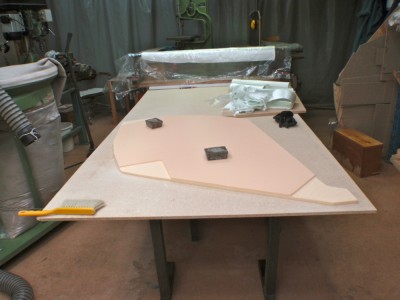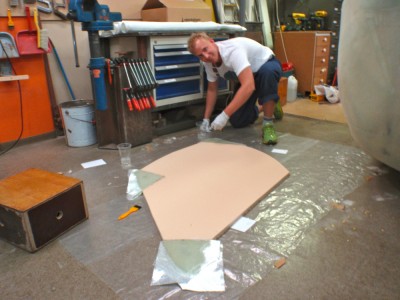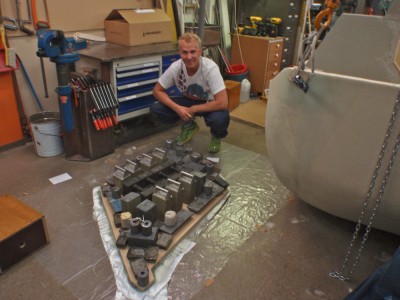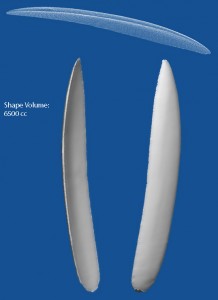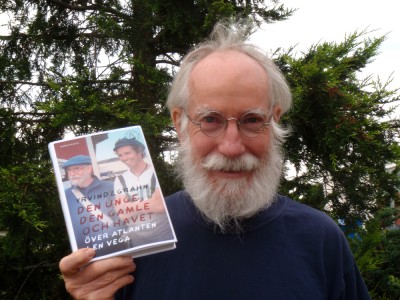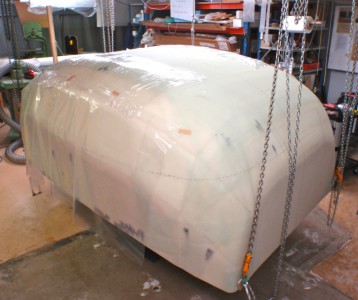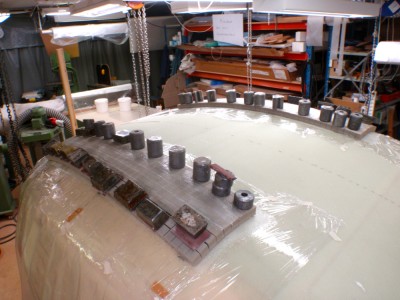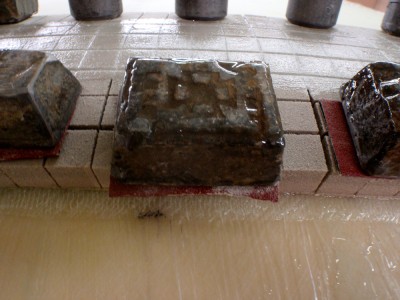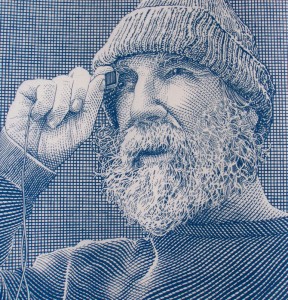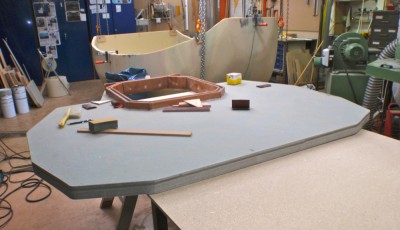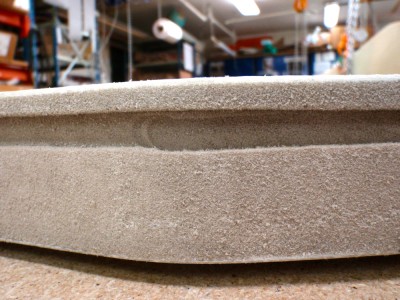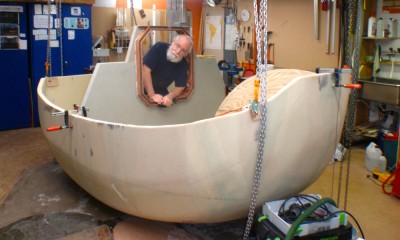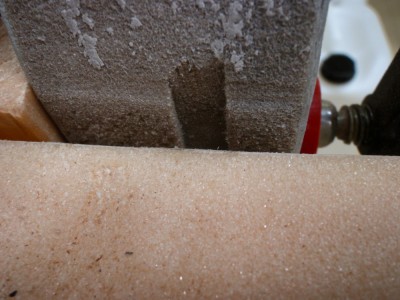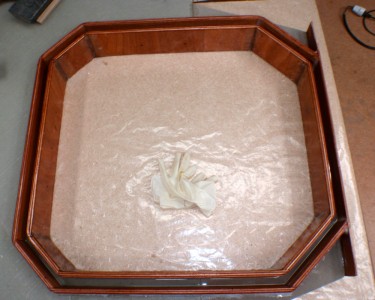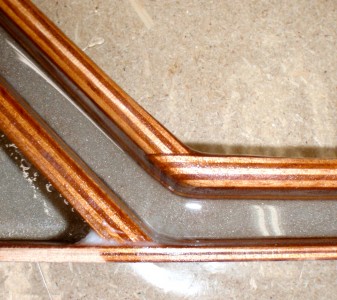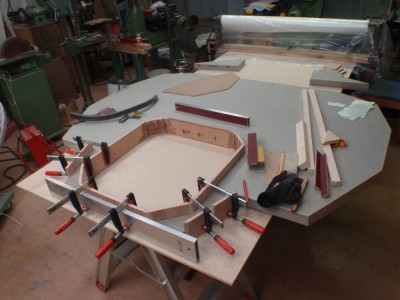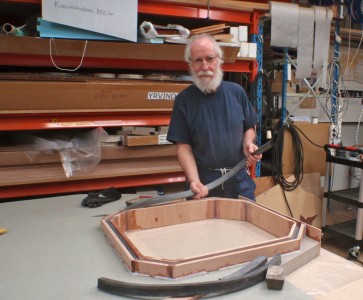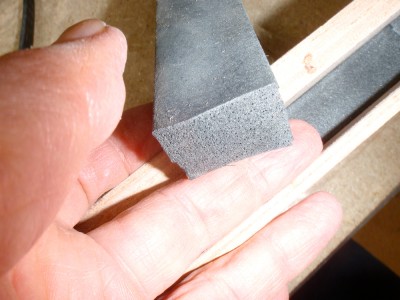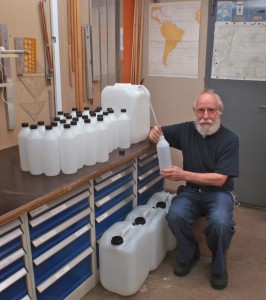At an other front I am working on the C.B.
It is very easy to get an symmetrical profile working with plywood becouse you can use one of the layers as centerplane. Working with composite and Divinycell is a different matter. Au pif I decided that the thickness of my C.B. should be 4 cm. Instead of trying to shape 4 cm Divinycell I glued tvo 2 cm pieces together. In the middle I put three layers of 450 gram glassfiber. Also I made reenforcment for the axis, the up and downhaul and the lowest end, the one which are going to touch the ground being my echo-sounder sailing in shallow waters. Also By having glassfibre in the middle the aft end of the profile which is very thin will be stronger. Whith this layer in the middle I have a plane of reference when shaping the board.
Below are some pictures. Click once or twice on them to enlarge. First picture I have used a router to create space for the reenforcement. Routing depht is 8 mm.
Petter, a young man just mowed here is helping me, here he is laminating the reenforcments.
We are using a lot of lead to put pressure on the surface. Of course the result is much better with vacum. I should realy using that instead. Still weights are good enough. We are using about 300 kilos of lead. Had we used vacum instead we would have gotten a force equvilant to about 10000 kilos (the area being about 80×120 cm) In addition the vacum would have gotten rid of all the small air bubbles.
To be continued…
Regards Yrvind.

